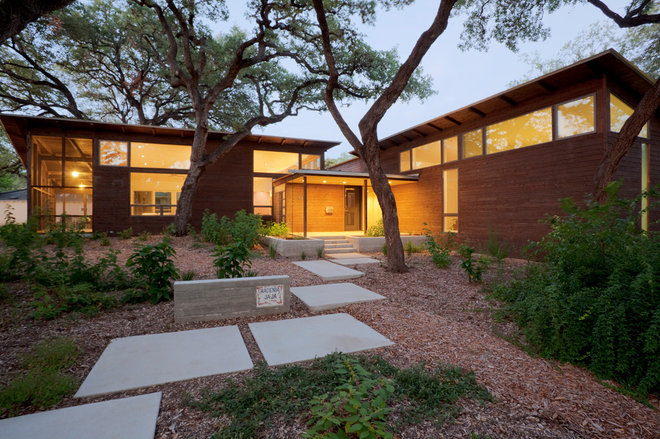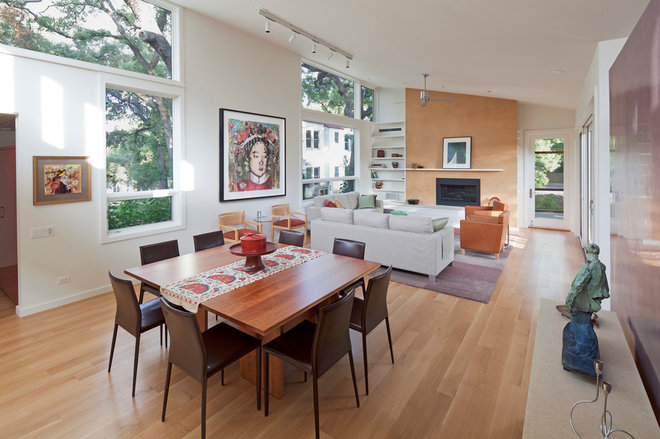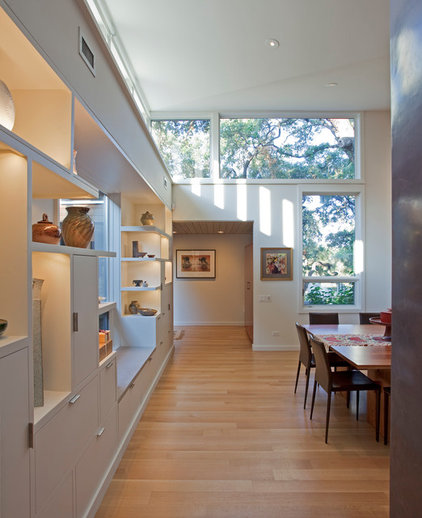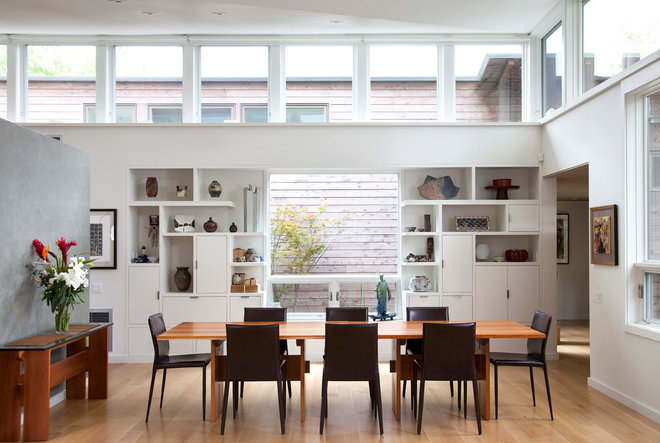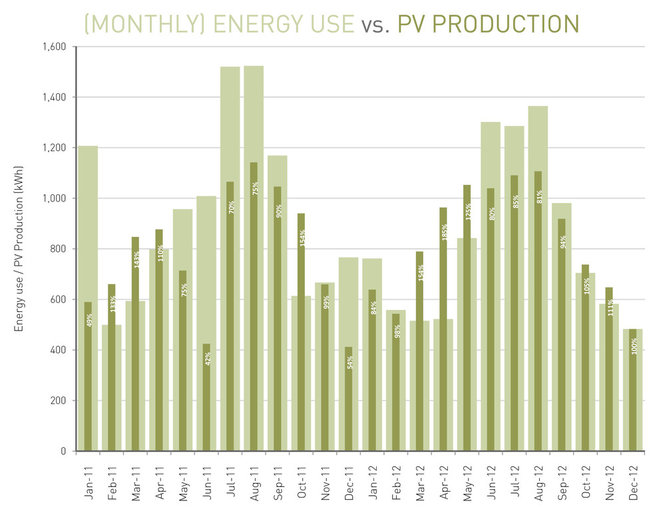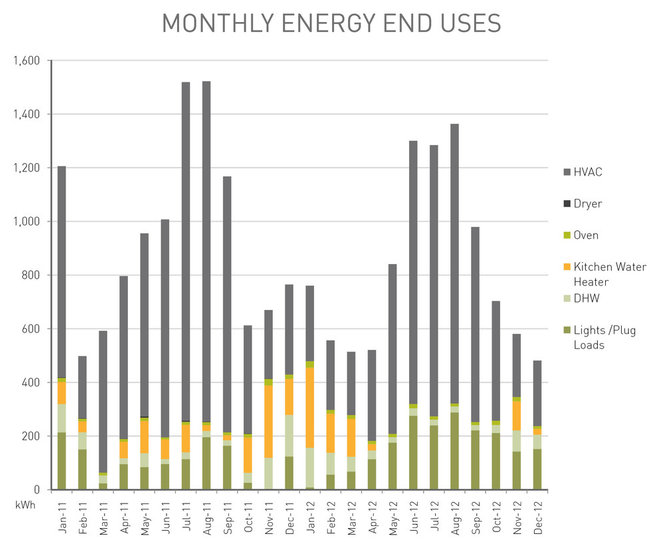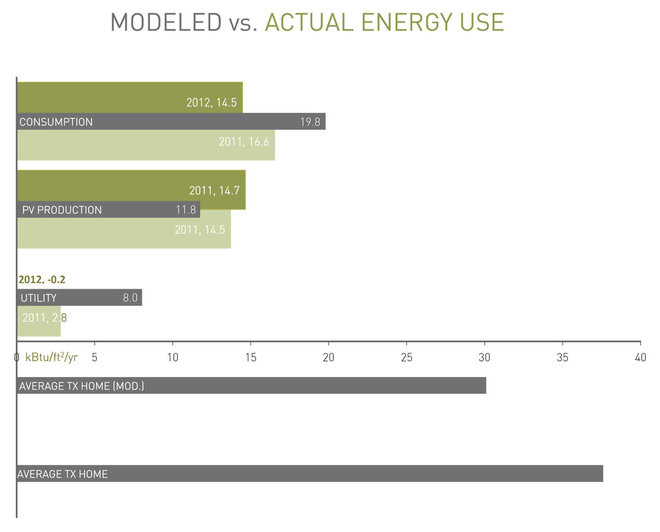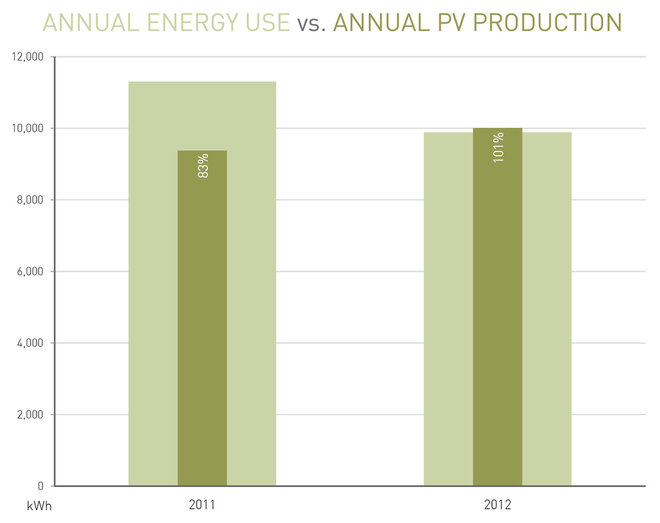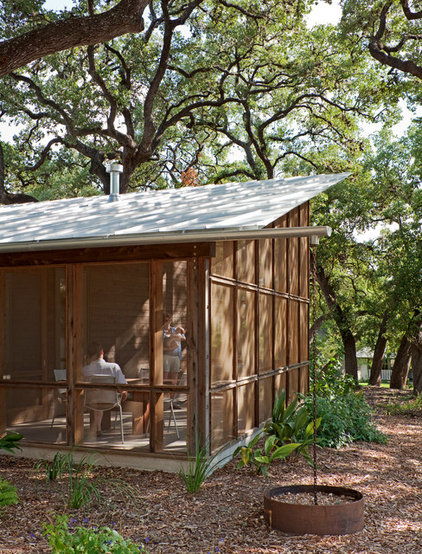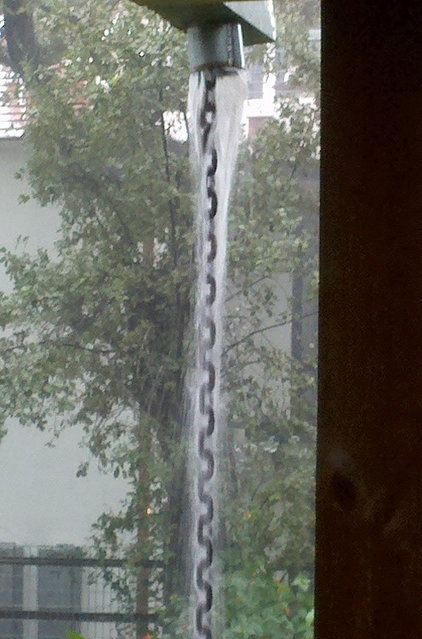Meet a High-Tech Home That Monitors Itself
And the car was quite comfortable, even luxurious. It was a larger sedan that I could fit in comfortably, and it had a terrific sound system. Not once did we feel like we were giving up something in the name of efficiency. Which brings up the question: If we can build cars like this, why can't we do the same for houses?
Well, the good news is we can. Here's just one example: a home designed by Lake/Flato Architects, where some wonderful architecture is combined with energy efficiency for a truly special home.
|
The client approached the architects and asked for a highly sustainable home; the architects, who are committed to the 2030 Challenge,
designed a home that is LEED Platinum certified. In brief, the 2030
Challenge is a goal that all new and renovated buildings be carbon
neutral by the year 2030. A number of strategies, from low-tech yet
appropriate site design to high-tech photovoltaic collectors, were used
to achieve that goal with this house.
But what makes this home special is its design. In fact, Tenna Florian, the project architect, says her favorite aspect of the house is how its shape was determined by existing tree locations. Rather than having rooms arranged in a linear composition, the home is L-shaped to accommodate existing features of the site. While one leg of the L has a lot of glass area to create light and bright public spaces, glazing was kept to a minimum on the other leg. |
|
Extensive clerestory windows turn
the home into a wonderful and warm lantern in the evening while
ensuring that no artificial lighting is needed throughout the entire
day.
While there's a lot of glass in this home, it's strategically placed to get the maximum benefit with the minimum cost and energy loss. Tenna points out that a typical custom house has 30 to 40 percent of the wall area as glass, but this house has 23 percent, which is closer to a typical house. |
The main entry is at the intersection of the two legs of the L. This entry is kept low, with a ceiling height of only 7 feet, 6 inches, to give a sense of compression and make the main living space feel taller and brighter.
|
By providing this interior
courtyard at the intersection of the two legs of the L, the architects
ensured that each room gets natural light from at least two sides. This
again keeps the interior light and bright and, once the courtyard
landscaping matures, will allow views of nature from every room.
|
|
In keeping with the clients' goal
of creating a highly sustainable home, a photovoltaic system generates
electricity. The energy produced by this system is monitored in real
time, so the owners can see how their house is performing.
The monitoring system, by eMonitor, cost less than $1,000 and helps the owners understand where the energy comes from and how it's being used. For example, this graphic shows a large fall-off of energy production from the photovoltaic system. This enabled the owners to quickly see that there was a problem, diagnose its cause and do the necessary fix. If it hadn't been for the monitoring system, the problem could easily have gone unnoticed. |
|
This graphic is really telling;
it shows how much energy each activity consumes. (It should be noted
that the home has several television sets, computers and other
modern-day tools. The owners don't, by any stretch of the imagination,
live anything but 21st-century lives.)
This graphic shows that a small item, the instant hot water dispenser in the kitchen, is a large consumer of energy. Rather than giving up the pleasure and convenience of having a cup of tea without waiting, the homeowners installed an on-off switch to limit the amount of time the hot water dispenser draws power. The home is also equipped with a "green switch" in the garage. When the owners leave the house for any extended period, they can easily flip the green switch to turn off many of those items that would stay on and continue to draw power. This kind of power usage, sometimes referred to as a vampire load, can be quite significant. Think about all of those devices that keep drawing power even when not in use. |
|
The monitoring system also
provides insights into how much energy the house was designed to
consume, how much energy it was designed to produce and how much actual
energy is consumed and produced. Real-time metrics tell the owners
whether they're hitting their goals and, if not, why not.
|
|
Drumroll, please ... in 2012 the house produced more energy than it consumed. Wouldn't it be nice for all of our houses to do that?
|
